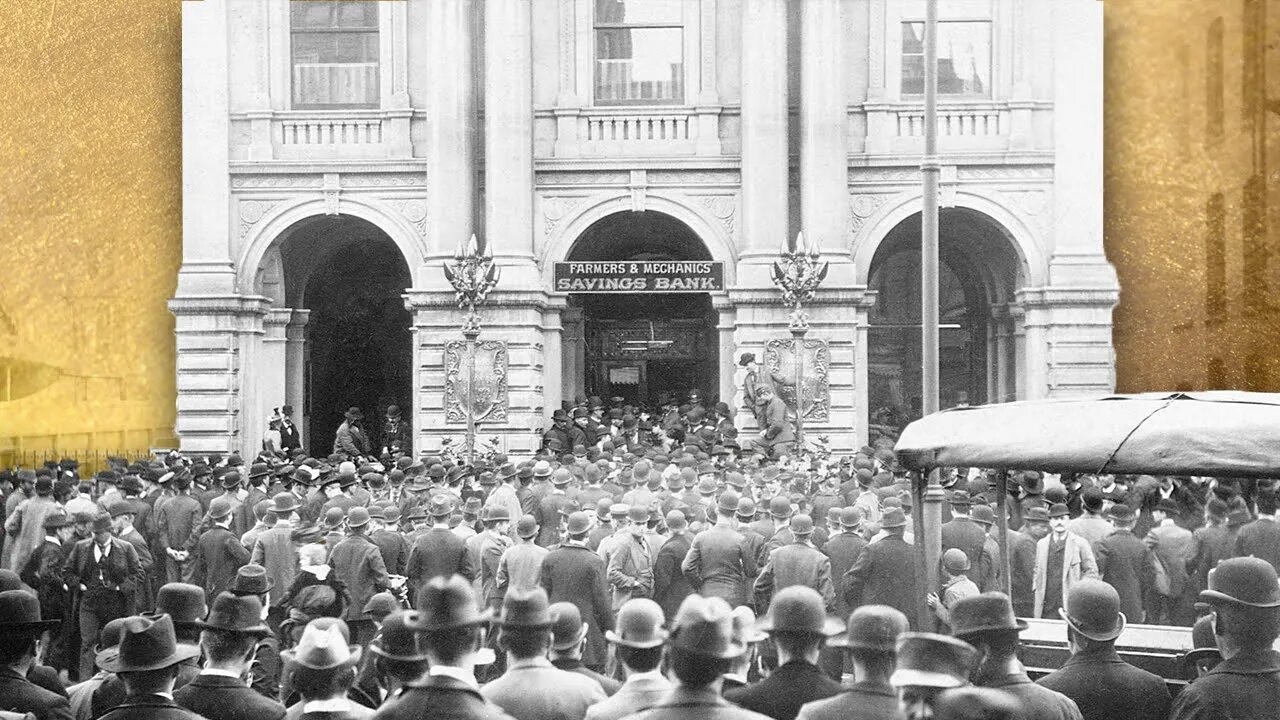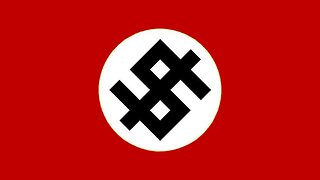Premium Only Content

Why were there so many "panics" during the gold standard?
Nobel-prize-winning economist Paul Krugman wrote, "Under the gold standard, America had no major financial panics other than in 1873, 1884, 1890, 1893, 1907, 1930, 1931, 1932, and 1933. Oh, wait….returning to the gold standard is an almost comically (and cosmically) bad idea."
Now first off, there were different stages of the gold standard, but economists consider the classical gold standard era from 1880 — 1914 to be its purest form because it wasn’t diluted like it was during the Civil War or later with the creation of the Fed.
For example, Fed Chairman Ben Bernanke blamed the Fed for the Great Depression.
So let’s focus on the “financial panics” where everyone agrees the US was still on a true gold standard.
But before you panic, let’s define a panic…
A financial panic is a sudden, drastic, widespread economic collapse.
So during those years there were indeed bank runs, which independent of the gold standard could’ve been mitigated via higher reserve requirements and/or deposit insurance, but was there “widespread economic collapse”?
From 1884 to 1886 yearly growth was -1.6%, .3%, and 8.1%, which averages out to 2.3%. So this wasn’t a panic if you consider that it’s higher than the U.S. average from 1870 — 2018 of 1.67%.
From 1890 to 1892 yearly growth was 9%, 1%, and 11%, which averages out to 7%. If this constitutes a panic then I’ll take one now please!
From 1893 to 1895 yearly growth was -5.8%, -4.7%, and 11.4%, which averages out to .3%. This was a panic, but just as it’d be unfair to give monetary policy credit for everything good it’d be unfair to blame it for everything bad. When we actually dive into the details of this panic there are numerous factors that I’m sure even Krugman would acknowledge contributed to this recession, such as the massive railroad bubble popping, which was created by the US government’s easy lending policy, or the massive silver bubble popping, which was created by the US government’s easy buying policy, or the wheat bubble popping, which I’m not sure how much the gov. gets the blame here, but for the sake of continuity let’s just say it does! And then there was the passage of a 50% tax increase in the principal form of federal taxation at the time — the tariff.
From 1907 to 1909 yearly growth was 2.6%, -10.8%, and 7.2%, which averages out to -.3%. This was also a panic where the US experienced the 9th largest decline in the stock market, but the financial sector used to make up a much smaller percentage of the economy and of the top 20 drops, 19 of them have occurred after the Fed’s creation. This panic was quickly stomped out by J.P. Morgan who had convinced New York bankers to inject large sums of their own money into the banking system to shore it up. It was this panic that led bank financiers to lobby for the Fed’s creation so that in future “panics” they wouldn’t have to risk their own money to save their own behinds.
As a comparison, from 2007 to 2009 yearly growth was 1.9%, -.1%, and -2.5%, which averages to -.7%. And unlike the 1907 panic, this one massively increased our national debt and consolidated wealth into bigger-than-ever institutions and bubbles.
Now, let’s look at the big macroeconomic picture…
From 1870 to 1914, US GDP growth totaled 393% whereas from 1970 — 2014 it totaled 242%. From this lens, the gold standard doesn’t sound like such a “comically (and cosmically) bad idea” after all, especially when you consider that a 1% difference is equal to $210 billion or roughly one Elon Musk.
Paul Krugman then argues in Golden Instability,
"Anyone who believes that the gold standard era was marked by price stability, or for that matter any kind of stability, just hasn’t looked at the evidence."
I’ve looked at the evidence so Mr. Krugman’s claim is already incorrect, but quibbling aside, let’s look at the two charts he cited to support his claim…
Besides the fact that America wasn’t under the classical gold standard anymore from 1919 to 1932, let’s look at the bigger picture here to get a more accurate understanding of price stability…
So why did America’s arguably most followed “top economist” not cite the full picture? Clearly, prices were much more stable pre-1914, pre-1933, and pre-1971.
The final argument Krugman makes in his essay is that…
"There is a remarkably widespread view that at least gold has had stable purchasing power. But nothing could be further from the truth."
Read FULL at https://www.anthonygalli.com/
-
 6:33
6:33
Anthony Galli
1 year agoHow Socialism Runs American “Capitalism”
38 -
 LIVE
LIVE
The Bubba Army
21 hours agoTaylor Swift & Travis Kelce ENGAGED! - Bubba the Love Sponge® Show | 8/27/25
2,377 watching -
 40:14
40:14
Uncommon Sense In Current Times
16 hours ago $1.70 earnedThe Dating Crisis in America | J.P. De Gance on the Church’s Role in Restoring Family & Faith
36.2K3 -
 12:35
12:35
Red Pill MMA
18 hours agoNow We Know The Truth.. Hero Who Stopped Raja Jackson Speaks Out
10.4K7 -
 41:04
41:04
Coin Stories with Natalie Brunell
1 day agoCooking, Culture & Crypto: Norma Chu’s Food Empire Turns Bitcoin Treasury
11.6K -
 8:03
8:03
MattMorseTV
17 hours ago $8.87 earnedThings in the UK just got INSANE...
92K136 -
 3:02:10
3:02:10
daniellesmithab
12 hours agoAlberta Next: Fort McMurray Town Hall
20.6K1 -
 2:11:17
2:11:17
Side Scrollers Podcast
21 hours agoINSANE Illegal Migrant Propaganda Xbox Game + Paypal REFUSES To Pay Dev + More | Side Scrollers
68.7K4 -
 20:58
20:58
GritsGG
1 day agoProtect the President Challenge on Warzone!
24K -
 1:49:07
1:49:07
The Michelle Moore Show
2 days ago'Biden's Immigration Mess, President's Trump Spiritual Cry For Help, English Speaking Truckers Only, Woke CEO's Killing of Conservative Brands, Palantir's Kill Chain' Mark Taylor: The Michelle Moore Show (Aug 25, 2025)
44.7K98